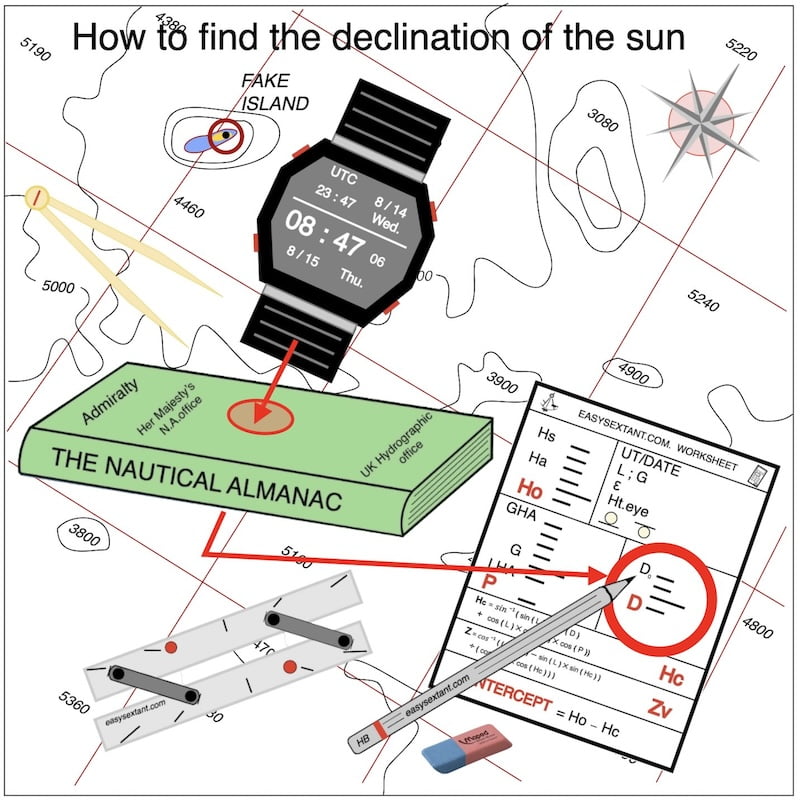This page, calculate sun’s declination and astronavigation is designed to calculate the sun’s declination using a nautical almanac at the precise Universal Time (UT) of the sextant observation at sea.
You will find four completely worked-out examples


Also this page on our self-instruction website emphasizes the importance and understanding of the sun’s declination, which is crucial in calculating the Line of Position (LOP).

The main purpose of this website is to provide guidance on calculating the Line of Position (LOP).
For more information about the theory behind the sun’s declination, please refer to the theory of the sun’s declination on this website

part of the worksheet
D = _ _ ° _ _ ‘, _
correc. d = _ _ ° _ _ ‘, _ +
___________________
D = _ _ ° _ _ ‘, _

How to calculate the Sun’s Declination using the Nautical Almanac
Four examples of the calculation of the sun’s declination using a nautical almanac at the precise Universal Time (UT) of the sextant observation at sea.
It always starts with the daily page of the nautical almanac.
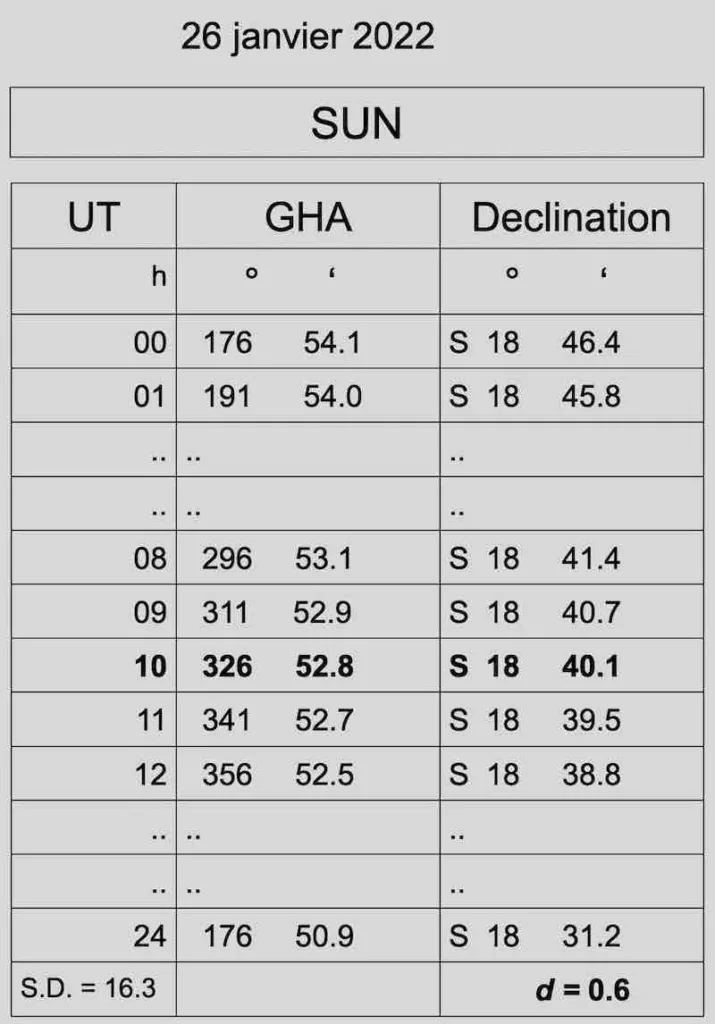
This section shows how to estimate the Sun’s declination manually by interpreting the daily almanac page and applying insight, rather than using a calculator.
1: example (calculate the declination of the sun at 02h 46m 23 s)
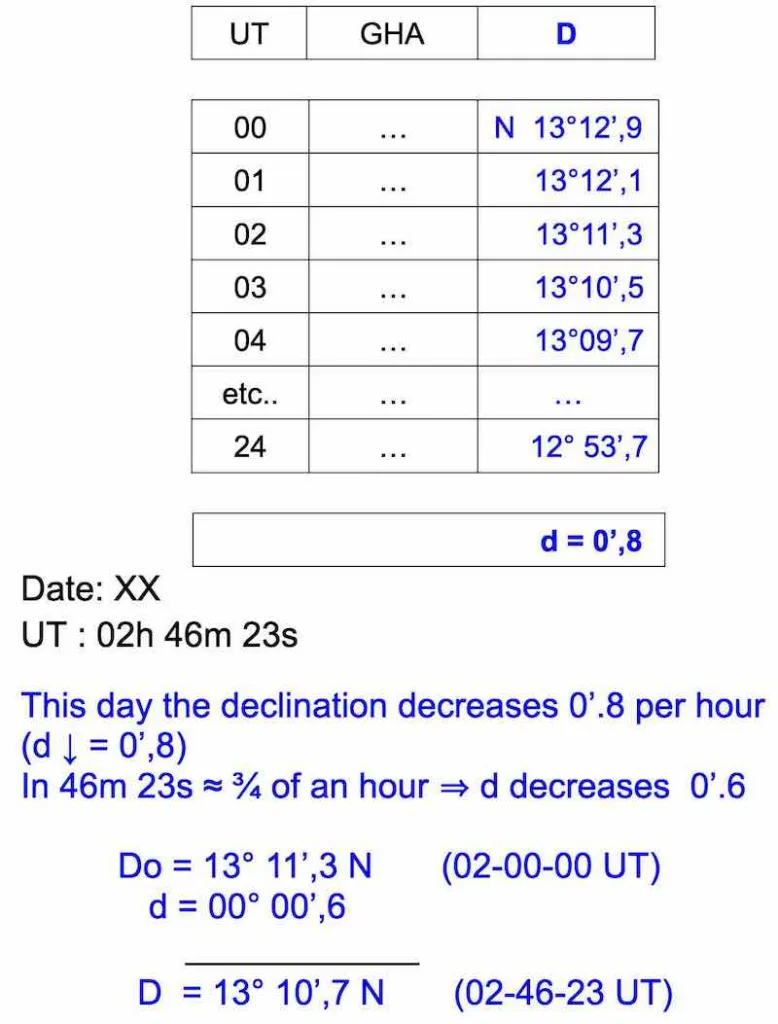
Hence, if you make a small error of 0.1 minutes, it’s not very important.
2: example

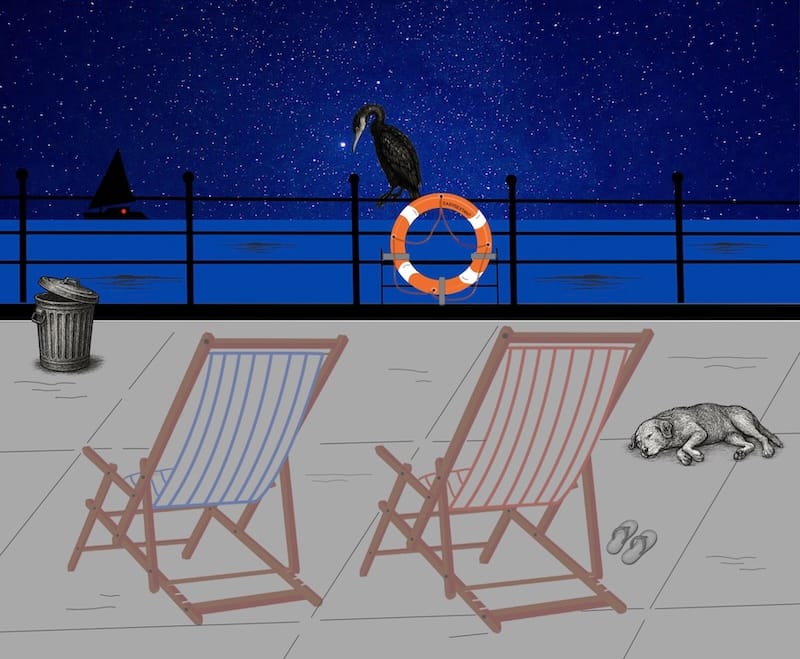
3: example
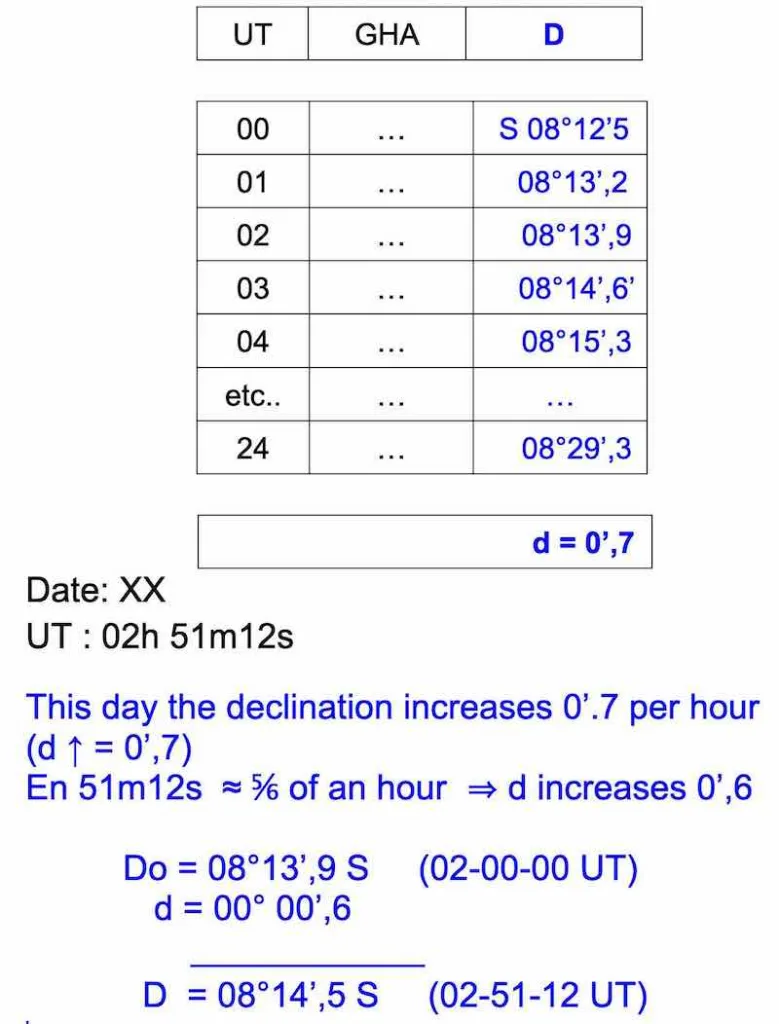
4: example
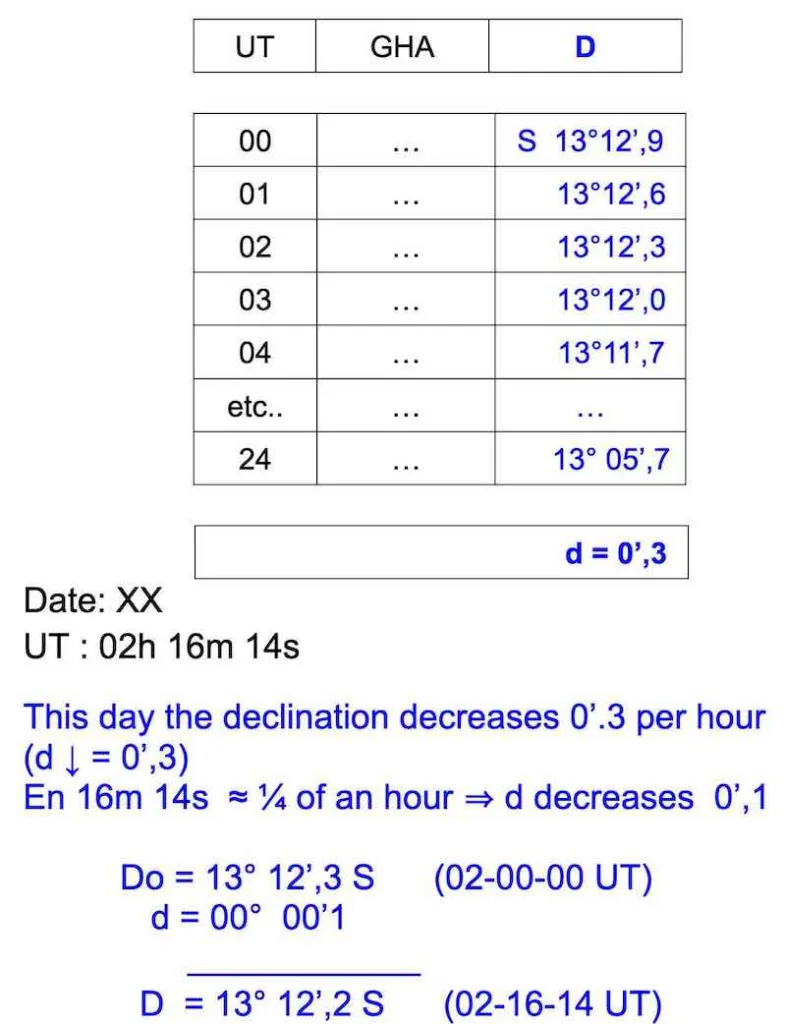

increments and corrections tables
Solution with increments and corrections tables from the nautical almanac
Example UT = 02h 16m 14s on day XX. (see example 4 on this page)

In fact, this day the declination of the sun decreases 0,3′ per hour.
As a result, the d correction is 0,1′ (see below)
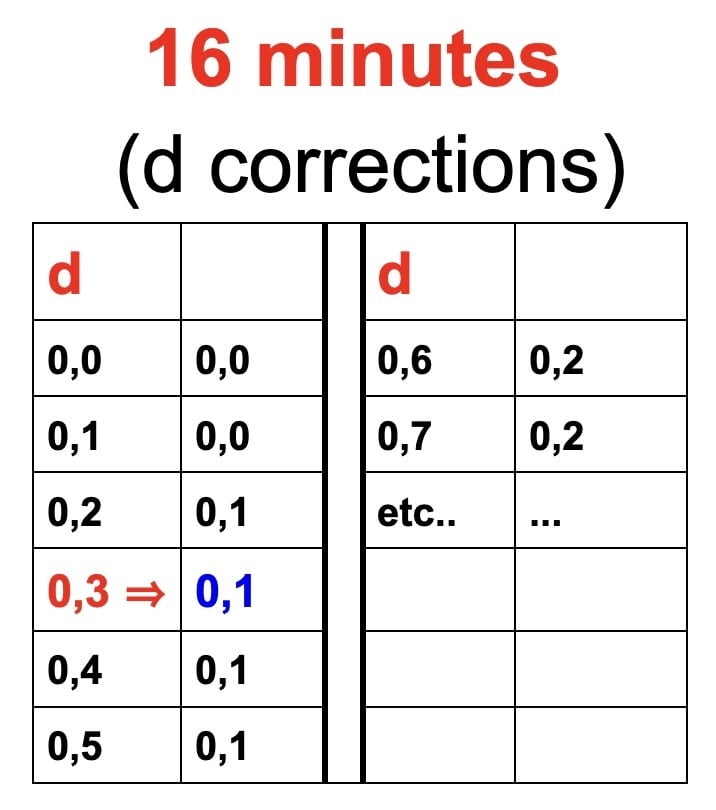
OR
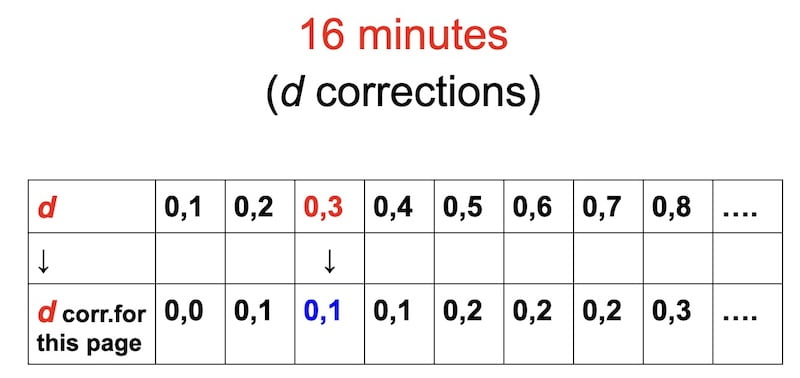
Note that each minute has its own table in the Nautical Almanac, in the section of the Permanent Tables.
Indeed, the first part is for the increment ( pp ) and the second part for the d correction
As a result, In our example: d correction. = 0′,1
For the increment go to sun’s increment page

Example UT = 02h 16m 14s on day XX.
(see example 4 on this page)
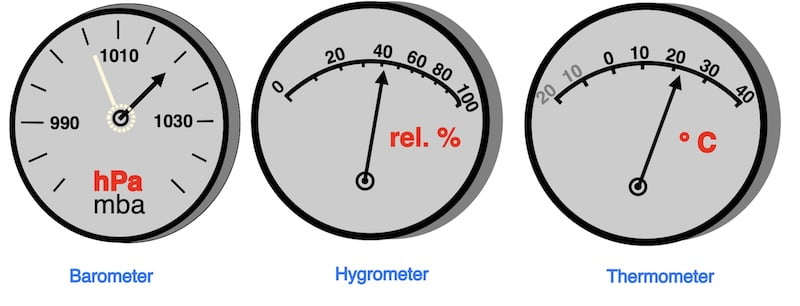
Key facts about the Sun’s Declination:
Firstly, the Sun’s declination refers to its angular distance north or south of the celestial equator. Here are some interesting facts about the Sun’s declination:
- Variation: The Sun’s declination changes throughout the year due to the tilt of Earth’s axis. It reaches its maximum positive value during the summer solstice and its maximum negative value during the winter solstice.
- Tropics: In fact, the Sun’s declination determines the boundaries of the tropical zones. When the Sun is directly overhead at the Tropic of Cancer (23.5 degrees north), it marks the summer solstice in the Northern Hemisphere. Conversely, when directly overhead at the Tropic of Capricorn (23.5 degrees south), it signifies the winter solstice in the Southern Hemisphere.
- Equinoxes: During the equinoxes (around March 20 and September 22), the Sun’s declination is zero. This occurs when the Sun crosses the celestial equator, and day and night are of equal length.
- Seasons: Also, the Sun’s declination influences the seasons. Higher declination results in longer days and shorter nights, while lower declination leads to shorter days and longer nights.
- Impact on Climate: Certainly, the Sun’s declination affects the amount and intensity of solar radiation received at different latitudes, playing a significant role in shaping regional climates.
- Celestial Navigation: Furthermore, sailors and navigators historically used the Sun’s declination to determine their latitude by measuring the Sun’s angle above the horizon at local noon.

Finally, understanding the Sun’s declination provides insights into the changing seasons, climatic patterns, and navigation, highlighting the dynamic relationship between Earth and the Sun.
